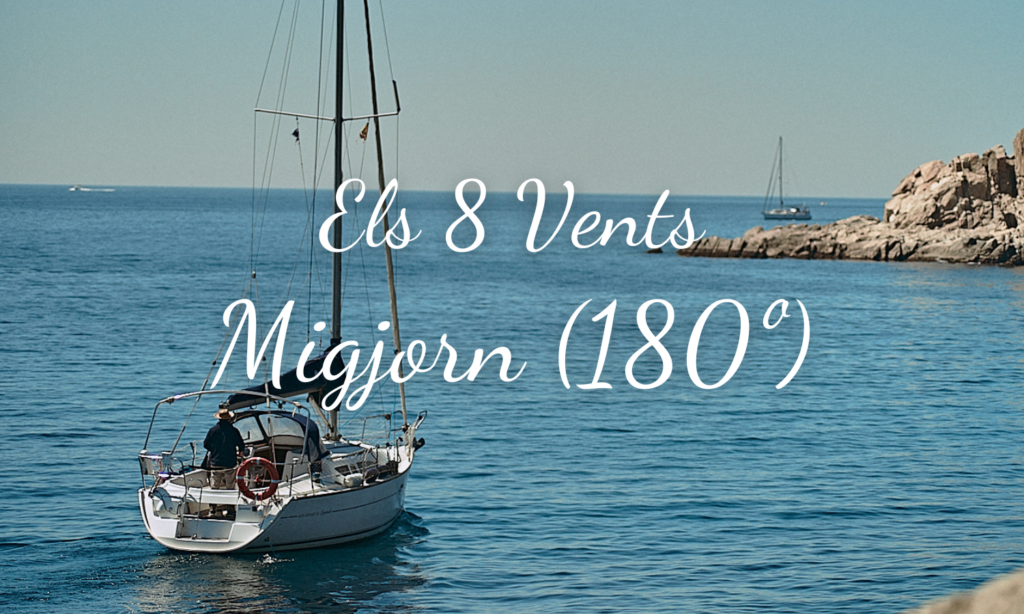Reading: 2.5 min
The Migjorn wind: a key wind to understand the Costa Brava.
The Migjorn is a characteristic southern wind that has shaped the culture, nature, and daily life along the Costa Brava. Known for bringing heat and humidity, this wind has a notable presence, especially during the summer months. Below, we will delve into its features, impact, and historical influence.
The origin of the name “Migjorn”
The name “Migjorn” comes from the Catalan word meaning “midday,” as this wind blows from the south, the direction where the sun is at noon. This connection with the sun reinforces the perception of Migjorn as a wind associated with intense heat and summer days.
Climatic and atmospheric effects
The Migjorn typically raises temperatures on the Costa Brava, creating a sultry atmosphere that can be uncomfortable for residents and visitors. Unlike other cooler winds, such as the Tramuntana, the Migjorn brings dense, humid air that often causes overcast and heavy skies. These factors contribute to the feeling of intense heat and the need for shade or proximity to the sea.

Navigation and maritime transport
While the Migjorn is not known for its intensity, it has been an ally for sailors throughout history. During the Middle Ages, mariners used this wind to travel along the Catalan coast, particularly northward. The calm sea conditions often generated by the Migjorn also make it ideal for recreational water activities such as kayaking or paddleboarding.
Impact on agriculture and fauna
Farmers on the Costa Brava have experienced the effects of the Migjorn in their fields. During summer, this wind can quickly dry out crops without an adequate irrigation system. However, the Migjorn also positively impacts marine fauna by altering maritime currents and encouraging some fish species to move closer to the shore. This phenomenon has been leveraged by traditional fishermen for generations.
Festivities and local culture
The Migjorn is deeply rooted in Costa Brava traditions. In towns like Palamós, its arrival during summer signals the beginning of festivals and events linked to the beach and outdoor activities. This wind carries with it a sense of summer energy that inspires the region’s social and cultural life.
Mediterranean architecture
Traditional buildings on the Costa Brava have been designed to mitigate the effects of the Migjorn. Mediterranean homes often feature thick walls and shaded courtyards that help alleviate the heat and keep interiors cool. This architectural approach reflects local wisdom accumulated over centuries.
Historical and cultural curiosities
The Migjorn is not just a meteorological phenomenon but also a source of cultural inspiration. In Catalan literature, it is often associated with summer landscapes and the calm of hot afternoons. It has also appeared in popular sayings that warn of its effects on the climate and agriculture.
The Migjorn is much more than a wind; it is an integral part of life on the Costa Brava. From its influence on the climate to its impact on local culture and traditions, this wind reminds us of the profound connection between nature and human life. Its presence invites us to reflect on how natural elements shape our lives and landscapes.








